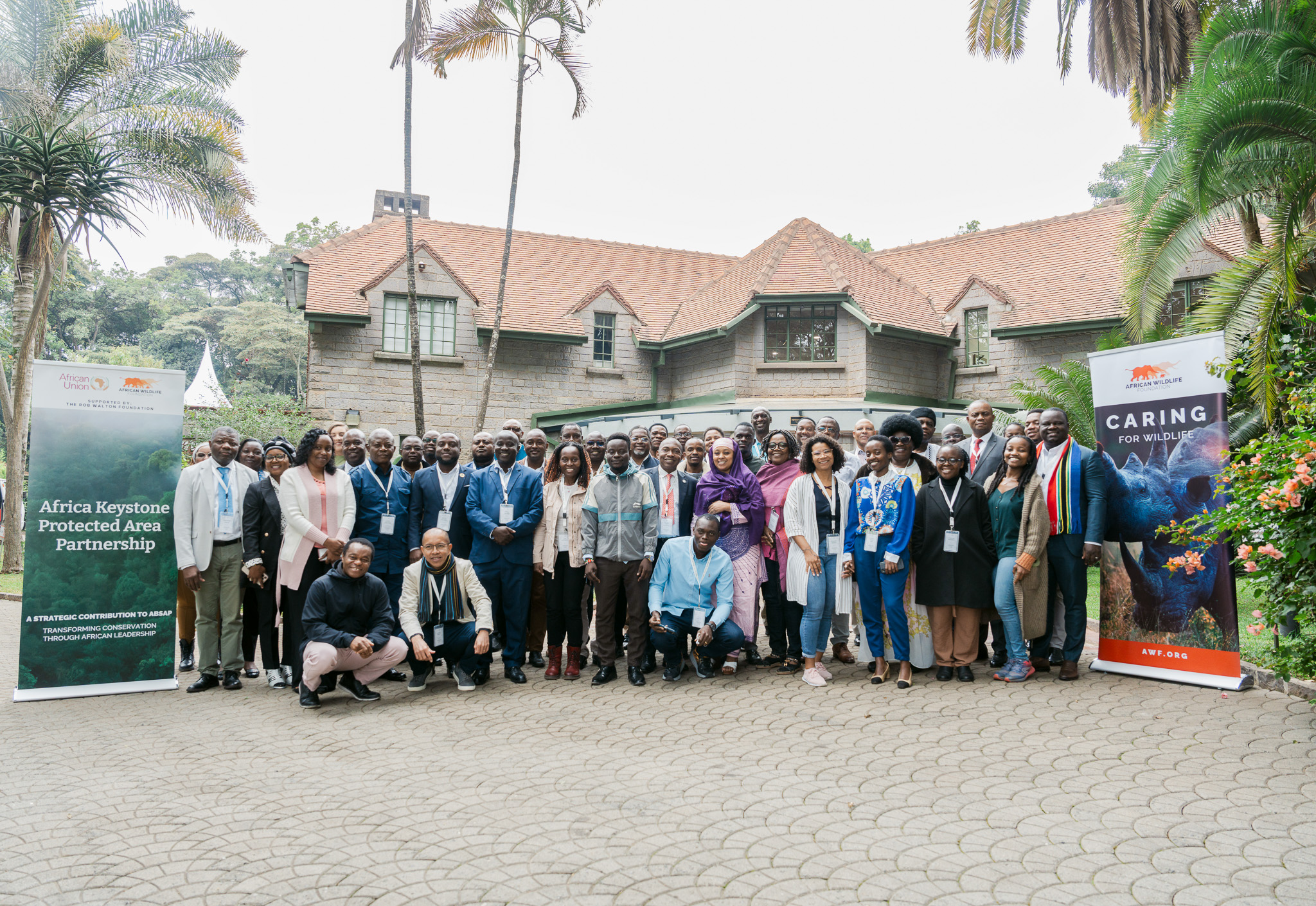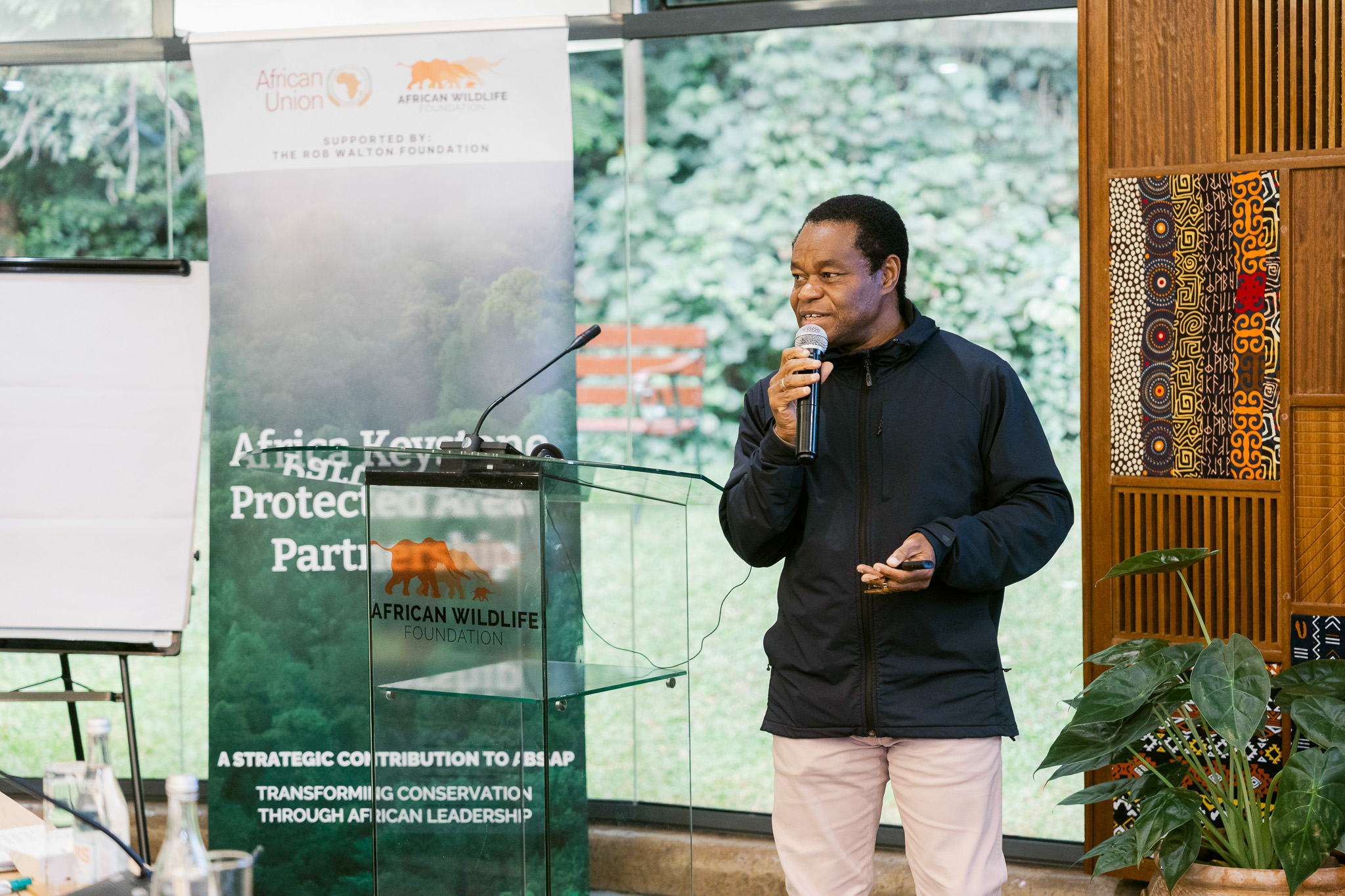Explainer: Safeguarding Africa's Biodiversity through the Africa Keystone Protected Area Partnership

African Protected Area Directors during the Technical Consultative Workshop at African Wildlife Foundation Headquarters, Nairobi, Kenya in July 2025
Africa, a continent of unparalleled biodiversity, is home to some of the world's most vital ecosystems. Protecting these natural treasures is not just an environmental imperative, but a cornerstone for the continent's sustainable development and the well-being of its people.
Frederick Kwame Kumah, AWF's Vice President - Global Policy and Governance, helps African governments work with global partners to make sure protecting nature is a key part of development plans, using his expertise to guide important international environmental discussions. In this role, Fred is leading AWF’s work in partnership with the African Union and the International Conservation Caucus Foundation (ICCF), supported by the Rob Walton Foundation, to bring African protected area leadership and environmental ministers to the table with a bold plan to secure Africa’s most critically important protected areas.

AWF Vice President - Global Policy and Governance, Frederick Kumah during the technical consultative workshop at the AWF headquaters in Nairobi, Kenya
Q: What, in a nutshell, is the Africa Keystone Protected Area Partnership?
Fred: In response to calls by African leaders, a group of NGOs including African Parks, the Wildlife Conservation Society, and Frankfurt Zoological Society, as well as scientists and experts, supported by the Rob Walton Foundation, recently conducted data-driven analysis of ~8,000 of Africa’s protected areas, to identify 162 of the most vital protected areas across 33 countries in Africa. These “Keystone Protected Areas” align closely with priority areas for conservation identified by AWF’s own research.
Supporting strong and effective management of these Keystone PAs can be one way of delivering on the priorities in the African Union Biodiversity Strategy and Action Plan through focused, measurable implementation models. Ideas like this can help us align national priorities, leverage regional cooperation, and drive momentum to meet global targets to protect 30% of land and marine ecosystems by 2030.
Supported by the Rob Walton Foundation, we are working with the African Union and ICCF to galvanize political will and commitment in Africa for the concept and to help identify opportunities to bring in the perspectives of local and regional stakeholders. With that in mind, last month we hosted a meeting with African protected area directors and environmental ministers to engage them in understanding the opportunities keystone protected areas present for strengthening protected area management.
Q: What were the ideas explored during your meetings in July?
Fred: We raised four main areas for discussion in July. The first was looking at how to involve African conservation leadership in the concept. The second was how to finance protection of the PAs, which includes mobilizing USD 1.2 billion annually to meet estimated resourcing needs across the Keystone PAs, through a diverse range of sources, including philanthropy, public finance, carbon markets, debt-for-nature swaps, and other sources.
Thirdly, we highlighted the fundamental need to focus on strengthening on-the-ground conservation management that centers community rights and voices, creates thousands of jobs that respect indigenous knowledge, supports equitable participation in conservation economies, and empowers local institutions with secure land tenure and governance rights to take meaningful ownership of these efforts.
And finally, we discussed protected area management and how to ensure transparency through standardized audits, clear metrics, and independent monitoring.

AWF Vice President Frederick Kumah at one of the bilateral meetings with African governments on the sidelines of the AMCEN meeting in July 2025
Q: The Keystone Protected Areas represent 162 protected areas, 34% of Africa's total protected areas. What makes them so crucial to the continent's conservation goals?
Fred: Think of these protected areas as keystones in an arch—without their effective management and long-term protection, achieving broader conservation ambitions becomes increasingly difficult. The science tells us they hold 71% of the continent’s endangered species and provide ecosystem services to 250 million people. They serve as ecological and strategic anchors, supporting the integrity of the continent’s conservation landscape. If we consider that the conservation landscape is holistically linked to but moving beyond the boundaries of the protected areas themselves, they provide a pathway to align biodiversity protection with climate resilience, sustainable development, and community well-being.
Q: What is the potential of this partnership from your perspective?
Fred: It is inspiring to work with funders like the Rob Walton Foundation who bring resources and big ideas to help solve global challenges like biodiversity loss. This partnership allows us to help mobilize Africa’s conservation leadership to support and shape an exciting opportunity for safeguarding biodiversity in Africa. There’s tremendous potential here to strengthen African institutional capacity and leverage partnership as a pathway to scaling learning across the network of African protected area directors, while ensuring African voices shape how conservation is practiced on the ground.